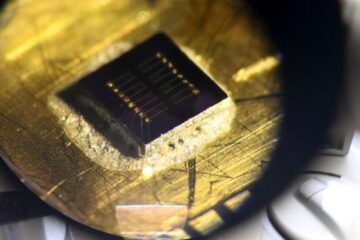New understanding of blades to lead to better cutting of super-hard high tech materials

Advanced materials like AlTiC, sapphire and SiC are now commonly used in many devices. One popular area that they are applied in is read/write head sliders for computer hard drives. A major practical problem with the use of these materials is that they are extremely difficult to machine, and the advanced applications they are used in require precise tolerances for finished dimensions.
The small components are cut from larger wafers of material using systems that have constant feed speeds. However performance of the dicing blades degrades over time due to the deterioration of their surface conditions, i.e., dislodgment or dullness of abrasive grains, deformations and abrasion of the matrix material. This alters the grindability or cutting performance of the blades. A better understanding of the mechanisms governing grindability could be applied to producing better components machined from very hard materials.
A team of Japanese researchers, Takuya Adachi, Koji Matsumaru and Kozo Ishizaki, from Nagaoka University of Technology have developed a constant feeding-force system, which enables the grindability of a grinding wheel to be analysed. Under constant feeding-force system, the feeding speed alters during processing, which depends on the surface conditions of a grinding wheel, and indicates its grindability.
In this study, the theoretical grindability of dicing blades was estimated by establishing a new model for feeding speeds under constant feeding-force dicing systems. The model was evaluated by comparing empirical and theoretical dicing speeds for different abrasive grain sizes. The researchers were able to conclude that the grindability of dicing blades depends on the abrasive grains size, number and distribution on the surface of the dicing blade.
Media Contact
More Information:
http://www.azonetwork.comAll latest news from the category: Materials Sciences
Materials management deals with the research, development, manufacturing and processing of raw and industrial materials. Key aspects here are biological and medical issues, which play an increasingly important role in this field.
innovations-report offers in-depth articles related to the development and application of materials and the structure and properties of new materials.
Newest articles

Sea slugs inspire highly stretchable biomedical sensor
USC Viterbi School of Engineering researcher Hangbo Zhao presents findings on highly stretchable and customizable microneedles for application in fields including neuroscience, tissue engineering, and wearable bioelectronics. The revolution in…

Twisting and binding matter waves with photons in a cavity
Precisely measuring the energy states of individual atoms has been a historical challenge for physicists due to atomic recoil. When an atom interacts with a photon, the atom “recoils” in…

Nanotubes, nanoparticles, and antibodies detect tiny amounts of fentanyl
New sensor is six orders of magnitude more sensitive than the next best thing. A research team at Pitt led by Alexander Star, a chemistry professor in the Kenneth P. Dietrich…





















